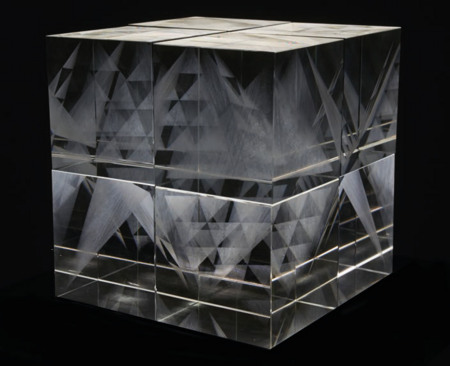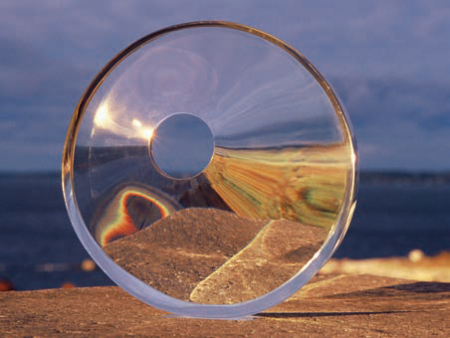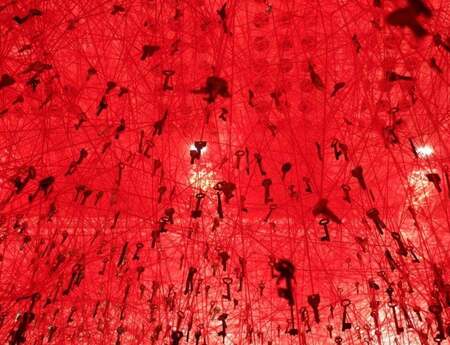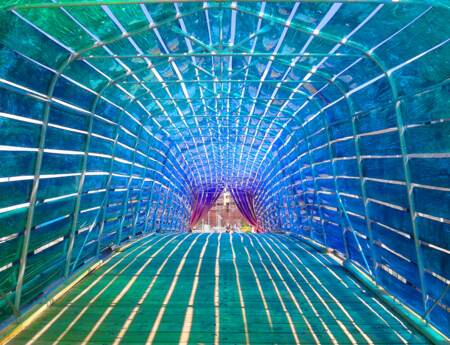EVE KOHA - LIVING WITH GLASS
Estonia is a small country with only few art schools and with the Estonian Academy of Arts (EKA) in Tallin which, since 1936, has been offering a high calibre education in glass. This includes the theoretical and practical training in the area of glass as well as the preservation and restoration of the cultural glass heritage, including the safeguarding of traditional techniques.
Over time this is how some of the stained glass windows in many Estonian churches were reconstructed by the staff and students of the glass department. Even the development of contemporary glass art has close links with the academy. Professors and lecturers are from the area and internationally renowned glass artists opened up new horizons to the young artistic generation.
In many ways Estonian glass art developed independently during Eve Koha‘s student days. At times additional influences from Scandinavian and Czech works occurred. Nonetheless during the Soviet era the means of the glass industry and -art were restricted, the creation was dominated by the so called‚ cold techniques‘ engrave and grind. Glass was often imported and only processed in Estonian glass factories. The last decades of independence from the Soviet Union and the membership of the EU have opened up new possibilities for glass art. An important turning point was the studio glass movement that reached the country in the early 1990s. Small studios with individual glass production ensued. Since then artists have followed new paths in glass design and experimented with the material as well as with their own skills.
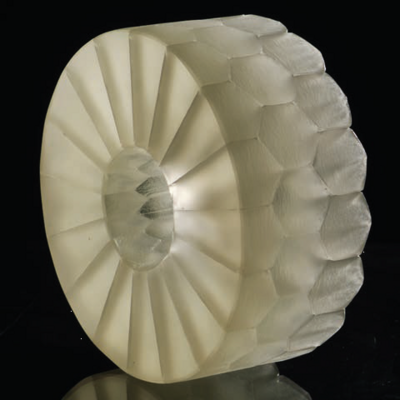
The name Eve Koha has close ties to the development of the multifaceted Estonian glass art. As a 21 year old she began a course of glass studies at the EKA and went on to become an instructor there after her graduation and, in 2003, was appointed associate professor for glass. Early on Eve Koha committed herself to the conservation and restoration of historic glass paintings in Estonia. She has participated in exhibitions, conferences, symposiums in many European countries and, beyond that for example in Russia. Her work has been bought by many institutions and private collections. As co-author of pivotal catalogues about Estonian glass art she helped her country‘s glass art gain international recognition. Furthermore she conducts researches on Estonian historic glass.
The artist uses a range of techniques of modern glass art to introduce a versatile spectrum of possibilities for this material. She draws out the viability of the glass in her works: clear or opaque, in most cases modestly monochromatic, stylised natural forms (Monstera 2006) to minimalist abstract (Vergessen 2002). Her work is always exceedingly precise in its form and the proportions well balanced. Her art is of a great clarity and attests to an intense feeling for the quality of the raw material, coupled with a great technical know-how and a long experience in the processing procedure.
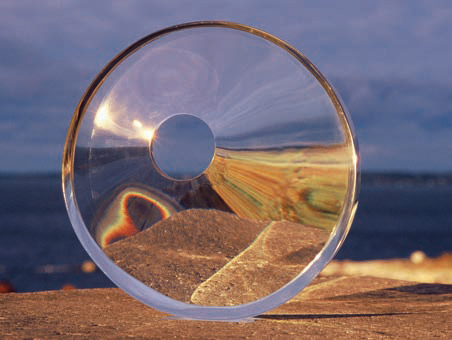
Eve Koha, „Vergänglichkeit“("Transience"), 2002, 30 x 9 cm. Optical glass, cut, polished
(Estonian Museum of Applied Art and Design)
In the last years she has, as the first glass artist in Estonia, worked with laser engraving. Seen technically, two-dimensional spatial design aspects are keyed into a computer programme and, by means of a laser beam, engraved three dimensionally into transparent glass cubes. Repetition and mirror imaging of the pictures in these cubes are simulated so that, each time one looks into the glass, a different aspect is seen. It‘s fascinating how in the inner core of her works geometric forms are depicted, multifaceted and flawlessly bright. The cubic, clearly formed and polished glass blocks gain shape through these inner forms. Simultaneously her pieces almost appear to possess an additional dimension. The objects stand out due to their precision and definition of geometric forms and volume inside the cubes, but also due to the clarity and references to the crystalline sources and mystic infiniteness of the material.
The lecturer understands how to impart the endless expressive power of the impressive material glass to an entire generation of students. For her own work glass is the material of infinite possibilities.
Author: Eva-Maria Günther
Photos: Eve Koha
This article was published as part of our cooperation with GLASHAUS – Internationales Magazin für Studioglas 3/2019.
Cover picture: Eve Koha, „Kristallraum“ ("Crystal Room"), 2015, 20 x 20 x 20 cm, Crystal, polished, engraved and Laser engraved.
